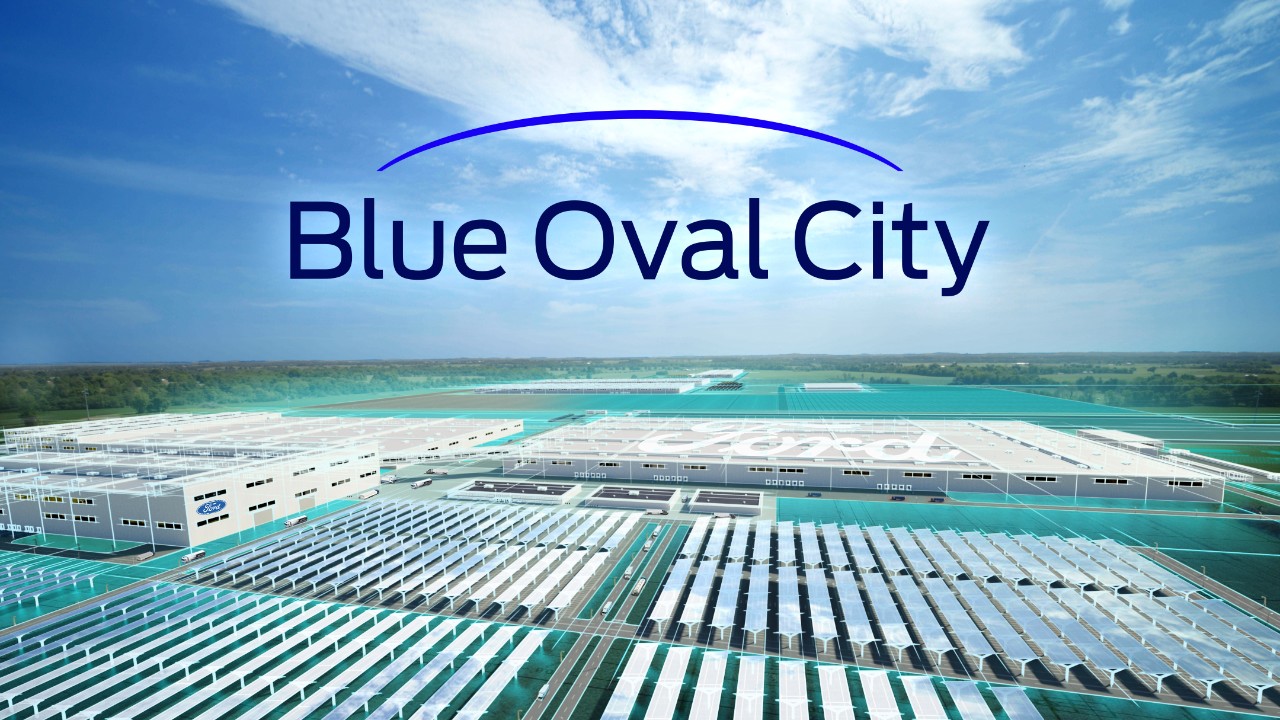

News
Ford CEO Jim Farley named in Newsweek’s list of Greatest Auto Disruptors as Exec. of the Year
Ford CEO Jim Farley has been named in Newsweek’s 2022 List of Greatest Auto Disruptors, capturing the title of Executive of the Year.
Farley took over as Ford’s frontman in late 2020 and has spearheaded the company’s transition to electrification. It is no secret Farley has contributed greatly to Ford’s continuing effort to bring competitive, electric options to the Detroit-based automaker’s lineup with new takes on legendary names like Mustang and the F-150.
“Ford president and CEO Jim Farley’s grandfather worked on the line that built the Model T more than 100 years ago. Now Farley has been tasked with advancing the Ford family legacy of auto disruption and innovation into the twenty-first century by moving the company to the forefront of the industry’s digital future,” Newsweek writes regarding Farley. “The steps taken in 2021 to push Ford forward toward this goal, blending the company’s storied history with goals around sustainability and digital innovation, are why Farley is Newsweek’s Auto Disruptors Executive of the Year. Farley has introduced electric vehicles starting with iconic nameplates: Ford Mustang Mach-E and F-150 Lightning, and Lincoln Zephyr. Those models can be modified without stops at dealerships. Their connected technologies allow for digital range, suspension, and handling upgrades wirelessly.”
RELATED:
Ford F-150 Lightning Range, efficiency revealed in Monroney sticker leak
Farley has been one of the biggest figures behind the evident transition of the American automotive industry, along with Tesla CEO Elon Musk. While Tesla and Musk essentially started the EV movement, disrupting a major sector and forcing companies to get on board or get left behind, Farley and Ford can be given credit for committing to the EV movement more than any other traditional OEM. “This digital transformation has ripped its way through business and, after years of talking about it, it’s finally arrived in our industry,” Farley said in an interview for his new award. “I think Tesla deserves a lot of credit for their acknowledgment of the shift more than 10 years ago.”
Farley also commented on the development of Ford’s BlueOval City, a $5.6 billion campus in Tennessee that will revolutionize the way the company builds cars, thanks to its 6,000 employees.
“This is our chance to build a carbon-neutral plant and do so in a socioeconomic location where there was very high unemployment and not a lot of jobs,” Farley said. “So it’s kind of like what we did in the ’20s in the company [when] lots of people moved from the South and overseas to work to get $5 a day from Mr. Ford.”
(Credit: Ford)
Among the other Disruptors in Newsweek’s article were Euisun Chung, Hyundai’s Executive Chair, who was named Visionary of the Year, Hyundai Motor Group, which was named Research and Development Team of the Year, and Alfonso Albaisa, Senior Vice President for Nissan, who won Designer of the Year.
Newsweek’s full list of its Greatest Auto Disruptors is available here.
I’d love to hear from you! If you have any comments, concerns, or questions, please email me at joey@teslarati.com. You can also reach me on Twitter @KlenderJoey, or if you have news tips, you can email us at tips@teslarati.com.

News
Tesla AI team burns the Christmas midnight oil by releasing FSD v14.2.2.1
The update was released just a day after FSD v14.2.2 started rolling out to customers.

Tesla is burning the midnight oil this Christmas, with the Tesla AI team quietly rolling out Full Self-Driving (Supervised) v14.2.2.1 just a day after FSD v14.2.2 started rolling out to customers.
Tesla owner shares insights on FSD v14.2.2.1
Longtime Tesla owner and FSD tester @BLKMDL3 shared some insights following several drives with FSD v14.2.2.1 in rainy Los Angeles conditions with standing water and faded lane lines. He reported zero steering hesitation or stutter, confident lane changes, and maneuvers executed with precision that evoked the performance of Tesla’s driverless Robotaxis in Austin.
Parking performance impressed, with most spots nailed perfectly, including tight, sharp turns, in single attempts without shaky steering. One minor offset happened only due to another vehicle that was parked over the line, which FSD accommodated by a few extra inches. In rain that typically erases road markings, FSD visualized lanes and turn lines better than humans, positioning itself flawlessly when entering new streets as well.
“Took it up a dark, wet, and twisty canyon road up and down the hill tonight and it went very well as to be expected. Stayed centered in the lane, kept speed well and gives a confidence inspiring steering feel where it handles these curvy roads better than the majority of human drivers,” the Tesla owner wrote in a post on X.
Tesla’s FSD v14.2.2 update
Just a day before FSD v14.2.2.1’s release, Tesla rolled out FSD v14.2.2, which was focused on smoother real-world performance, better obstacle awareness, and precise end-of-trip routing. According to the update’s release notes, FSD v14.2.2 upgrades the vision encoder neural network with higher resolution features, enhancing detection of emergency vehicles, road obstacles, and human gestures.
New Arrival Options also allowed users to select preferred drop-off styles, such as Parking Lot, Street, Driveway, Parking Garage, or Curbside, with the navigation pin automatically adjusting to the ideal spot. Other refinements include pulling over for emergency vehicles, real-time vision-based detours for blocked roads, improved gate and debris handling, and Speed Profiles for customized driving styles.
Elon Musk
Elon Musk’s Grok records lowest hallucination rate in AI reliability study
Grok achieved an 8% hallucination rate, 4.5 customer rating, 3.5 consistency, and 0.07% downtime, resulting in an overall risk score of just 6.

A December 2025 study by casino games aggregator Relum has identified Elon Musk’s Grok as one of the most reliable AI chatbots for workplace use, boasting the lowest hallucination rate at just 8% among the 10 major models tested.
In comparison, market leader ChatGPT registered one of the highest hallucination rates at 35%, just behind Google’s Gemini, which registered a high hallucination rate of 38%. The findings highlight Grok’s factual prowess despite the AI model’s lower market visibility.
Grok tops hallucination metric
The research evaluated chatbots on hallucination rate, customer ratings, response consistency, and downtime rate. The chatbots were then assigned a reliability risk score from 0 to 99, with higher scores indicating bigger problems.
Grok achieved an 8% hallucination rate, 4.5 customer rating, 3.5 consistency, and 0.07% downtime, resulting in an overall risk score of just 6. DeepSeek followed closely with 14% hallucinations and zero downtime for a stellar risk score of 4. ChatGPT’s high hallucination and downtime rates gave it the top risk score of 99, followed by Claude and Meta AI, which earned reliability risk scores of 75 and 70, respectively.

Why low hallucinations matter
Relum Chief Product Officer Razvan-Lucian Haiduc shared his thoughts about the study’s findings. “About 65% of US companies now use AI chatbots in their daily work, and nearly 45% of employees admit they’ve shared sensitive company information with these tools. These numbers show well how important chatbots have become in everyday work.
“Dependence on AI tools will likely increase even more, so companies should choose their chatbots based on how reliable and fit they are for their specific business needs. A chatbot that everyone uses isn’t necessarily the one that works best for your industry or gives accurate answers for your tasks.”
In a way, the study reveals a notable gap between AI chatbots’ popularity and performance, with Grok’s low hallucination rate positioning it as a strong choice for accuracy-critical applications. This was despite the fact that Grok is not used as much by users, at least compared to more mainstream AI applications such as ChatGPT.
News
Tesla (TSLA) receives “Buy” rating and $551 PT from Canaccord Genuity
He also maintained a “Buy” rating for TSLA stock over the company’s improving long-term outlook, which is driven by autonomy and robotics.

Canaccord Genuity analyst George Gianarikas raised his Tesla (NASDAQ:TSLA) price target from $482 to $551. He also maintained a “Buy” rating for TSLA stock over the company’s improving long-term outlook, which is driven by autonomy and robotics.
The analyst’s updated note
Gianarikas lowered his 4Q25 delivery estimates but pointed to several positive factors in the Tesla story. He noted that EV adoption in emerging markets is gaining pace, and progress in FSD and the Robotaxi rollout in 2026 represent major upside drivers. Further progress in the Optimus program next year could also add more momentum for the electric vehicle maker.
“Overall, yes, 4Q25 delivery expectations are being revised lower. However, the reset in the US EV market is laying the groundwork for a more durable and attractive long-term demand environment.
“At the same time, EV penetration in emerging markets is accelerating, reinforcing Tesla’s potential multi‑year growth runway beyond the US. Global progress in FSD and the anticipated rollout of a larger robotaxi fleet in 2026 are increasingly important components of the Tesla equity story and could provide sentiment tailwinds,” the analyst wrote.
Tesla’s busy 2026
The upcoming year would be a busy one for Tesla, considering the company’s plans and targets. The autonomous two-seat Cybercab has been confirmed to start production sometime in Q2 2026, as per Elon Musk during the 2025 Annual Shareholder Meeting.
Apart from this, Tesla is also expected to unveil the next-generation Roadster on April 1, 2026. Tesla is also expected to start high-volume production of the Tesla Semi in Nevada next year.
Apart from vehicle launches, Tesla has expressed its intentions to significantly ramp the rollout of FSD to several regions worldwide, such as Europe. Plans are also underway to launch more Robotaxi networks in several more key areas across the United States.








